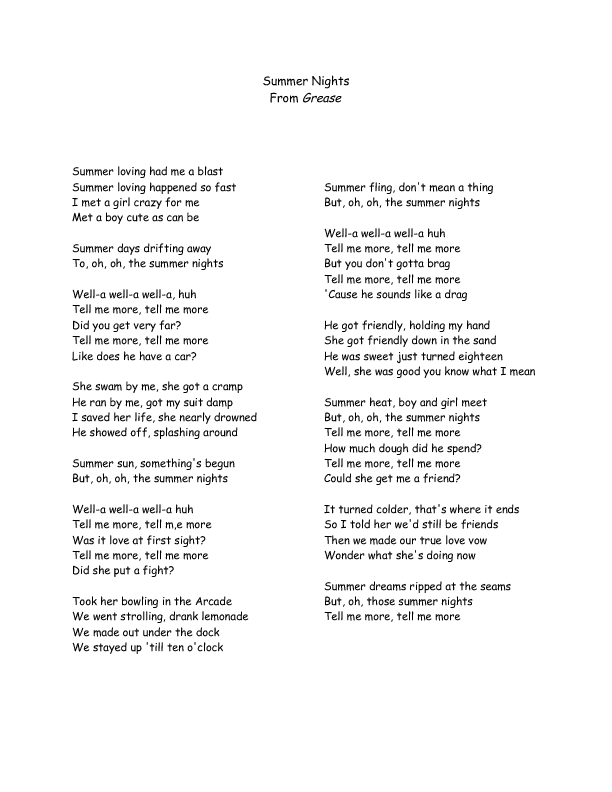

So when writing a bridge, try contrasting it with the chorus and the verse if possible. By adding a bridge section before the third and final chorus you can avoid the listener getting bored by too much repetition. This is why the bridge also differs from both the verse and chorus. In a way, this section acts as a ‘bridge’ between the second and third chorus of the song. The bridge of a song usually occurs after the second chorus and acts as a sort of transition. You can also have multiple hooks in the song, but there’s usually a single extremely memorable and catchy hook that will get the song stuck in the listener’s head. This can be done with a simple musical element such as a riff or a melody, or perhaps a line of lyrics during the chorus.

Like with a fishing hook to a fish, the hook of a song is intended to catch the listener and their attention. You know the feeling when a song gets stuck playing in your head and you can only hear the same part of the song repeating over and over again? That’s the hook. Whereas the chorus is a part of the song, a hook can be a bit trickier to nail down and not everyone agrees with the definition of a hook. What is the difference between a chorus and a hook? One thing that people can often mix up is the difference between the chorus of a song and a ‘hook’. When writing a song you’ll want to make sure that the chorus is the song’s emotional high-point and contains more energy than the verse, for instance. Usually the lyrics of a song’s chorus don’t change, but you can surprise the listener by adding something new or changing the lyrics or structure of the chorus as the song progresses. Because of the repetition, a chorus is also known as a ‘refrain’.

The chorus is usually the most memorable part of a song, partly because it’s repeated many times during the song and contains the ‘hook’ of the song. A pre-chorus is optional but is a good way to get the listener prepared and excited for the chorus, which for many is the highlight of the song. This part of a song is also known as a build and is used to transition from the verse to the chorus. Pre-chorusīefore the chorus you can also include a pre-chorus, a section that is shorter than the verse it precedes and the chorus that follows. Don’t forget to add some twists and surprises as the song progresses. Just make sure that the lyrics of the different verses work together and make sense either thematically or tell the same narrative. During the verse use your lyrics to advance the story you’re trying to tell. The length and the number of verses can vary, but having at least two verses in a song is a good call. If you’re a skilled lyricist and a storyteller, the verse is your chance to highlight your songwriting skills when it comes to lyrics. However, don’t give away everything you have to offer during the intro but keep the listener wanting more and continue listening. The intro can also introduce the song’s key and basic rhythm of the song while also establishing the song’s theme in its lyrics. For example, when writing a song try to give an idea of the genre your song is in: is it a dramatic pop ballad, an adrenaline filled rock song or a straightforward punk track. A good intro establishes the song and can hint at what to expect later on. If you want to get the listener’s attention and keep them listening to the end, you need to have a captivating intro. Let’s go through the different parts of a song that you can then use as building blocks for your next big hit. That’s because of the different conventions of songwriting and song structure. By following the conventions of songwriting and using the different parts of a song appropriately, you can make it easier for a listener to understand and follow the song.Įven if we’re not aware of it, we’re usually pretty good at anticipating how a song is going to progress. Song structureĮven though there are no fixed rules for writing a song, it’s good to be familiar with the basic song structure. If you want to try your hand at songwriting or just want to learn what a song is made of, keep reading as we explore the different parts of a song. That’s where the song’s structure comes in.
#I used to hear a simple song lyrics how to#
Instead, you need to know how to put all of the different elements in order. In order to write a catchy song that others are excited to hear and maybe even sing along to, it’s not enough to have a few good guitar riffs or drum beats. Sounds like you’re getting ready to start writing your own songs. You may start to feel like putting your new playing skills to good use and come up with something to play that has not been written by someone else. Maybe by now you’ve started to get the hang of playing your instrument of choice and you’re progressing nicely.


 0 kommentar(er)
0 kommentar(er)
